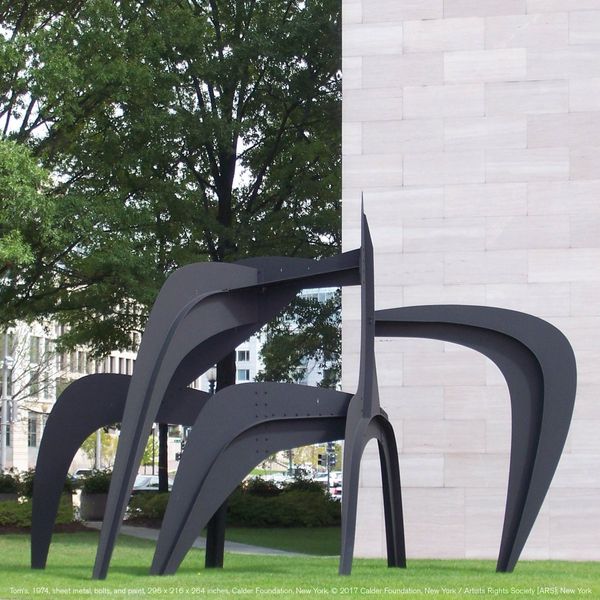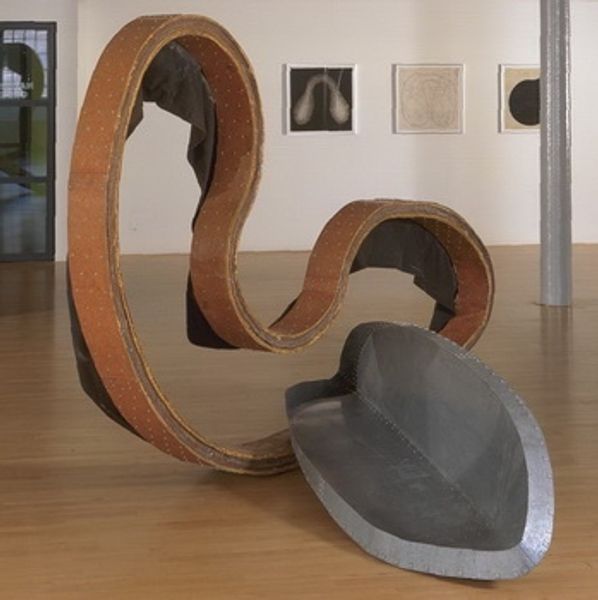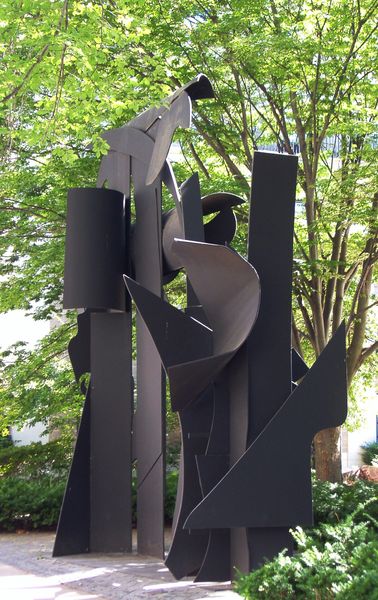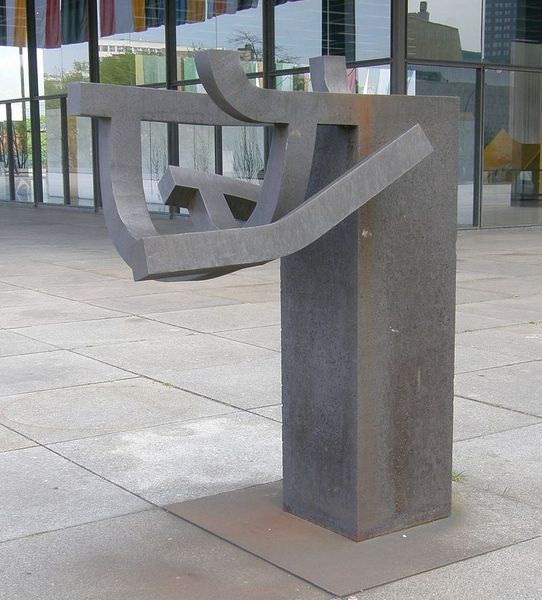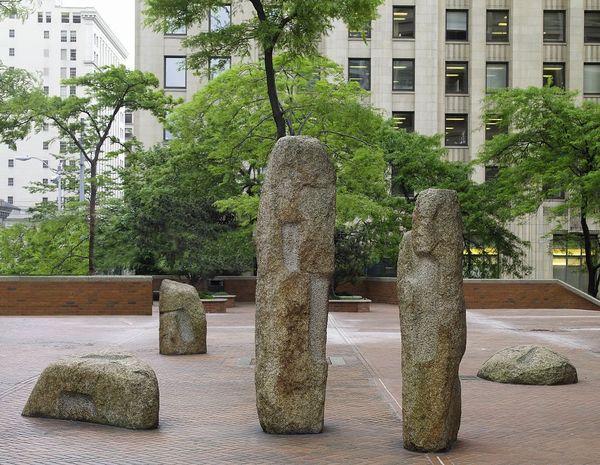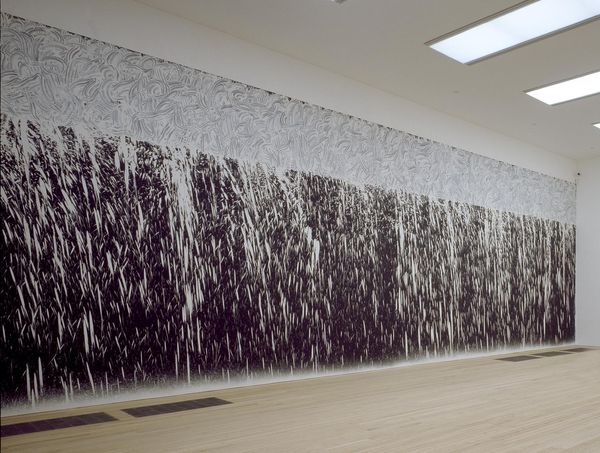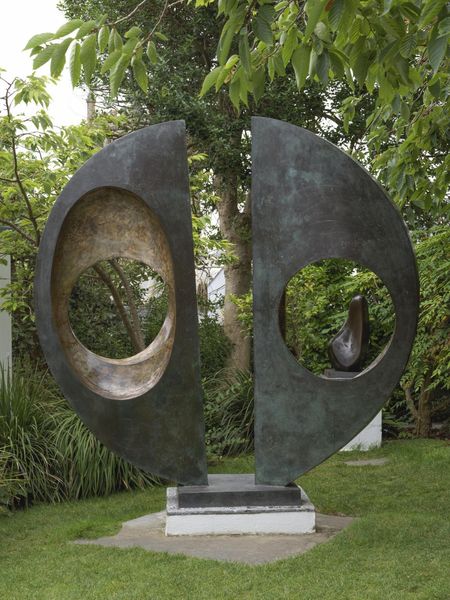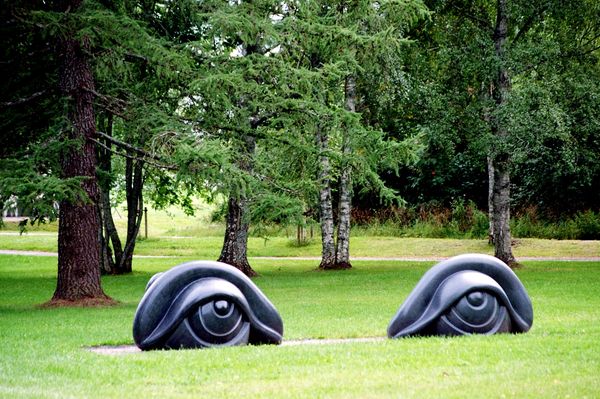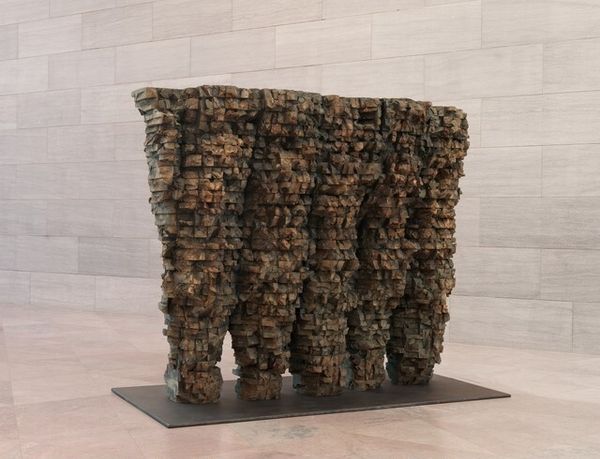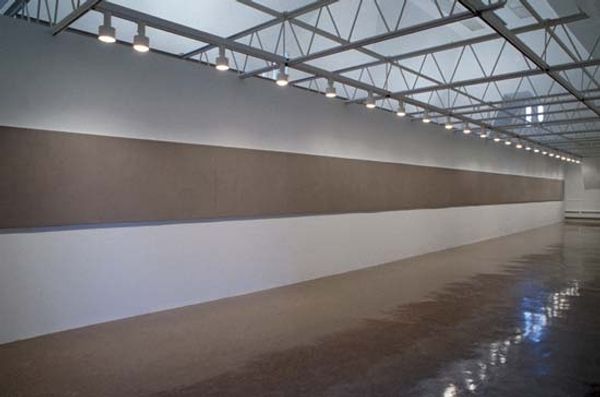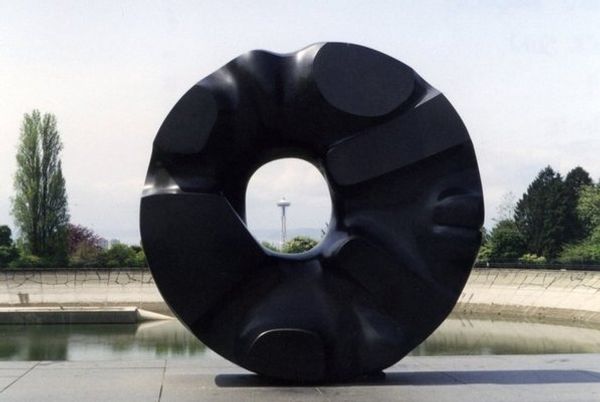
sculpture, site-specific, wood
#
environmental-art
#
geometric
#
sculpture
#
site-specific
#
wood
#
modernism
Dimensions: overall: 2255.7 x 4613.6 x 1310.2 cm (888 1/16 x 1816 3/8 x 515 13/16 in.) overall (approximate diameter of each dome): 823 cm (324 in.)
Copyright: National Gallery of Art: CC0 1.0
Editor: Here we have Andy Goldsworthy’s 'Roof,' created between 2004 and 2005. These striking, layered-stone sculptures command the space. They look like a blend of natural forms and architectural design. What do you see in this piece beyond the formal construction? Curator: The environmental art movement and site-specific installations often confront notions of land ownership and environmental responsibility, particularly given Modernism's drive to "control" nature through industry and design. Given the artist's repeated work using dry stone walls as a sculptural intervention, I believe 'Roof' seeks to question the intersection between architecture, nature, and human intervention. What about the way it is embedded in a larger, more corporate architectural context? Editor: That makes sense. I hadn't thought about the implications of placing something so raw and earthy within such a controlled, architectural space. Is there a particular significance to the choice of materials or forms? Curator: I think Goldsworthy prompts a dialogue about our relationship with nature. By placing these biomorphic yet geometric forms "under" a man-made structure and inside a courtyard space, 'Roof' invites us to question our dominion over the natural world. Does the work make you consider issues around sustainability and our built environment? Editor: Definitely. Thinking about it now, it challenges the separation of "nature" and "culture" that's been so ingrained in Western thought. The artist seems to highlight these points of tension by juxtaposing rough stones in a geometrical formation against the clean, rectangular space, calling into question traditional forms of institutionalization, colonialism, and enclosure. Curator: Exactly! And understanding these tensions helps us appreciate the artwork's power in reshaping our perceptions. It encourages an understanding of these larger global conversations. Editor: This has given me a lot to think about, particularly the role of environmental art in sparking important questions about place and responsibility. Curator: Yes, this type of installation requires an interdisciplinary understanding to fully grapple with what is meant to be communicated.
Comments
No comments
Be the first to comment and join the conversation on the ultimate creative platform.

